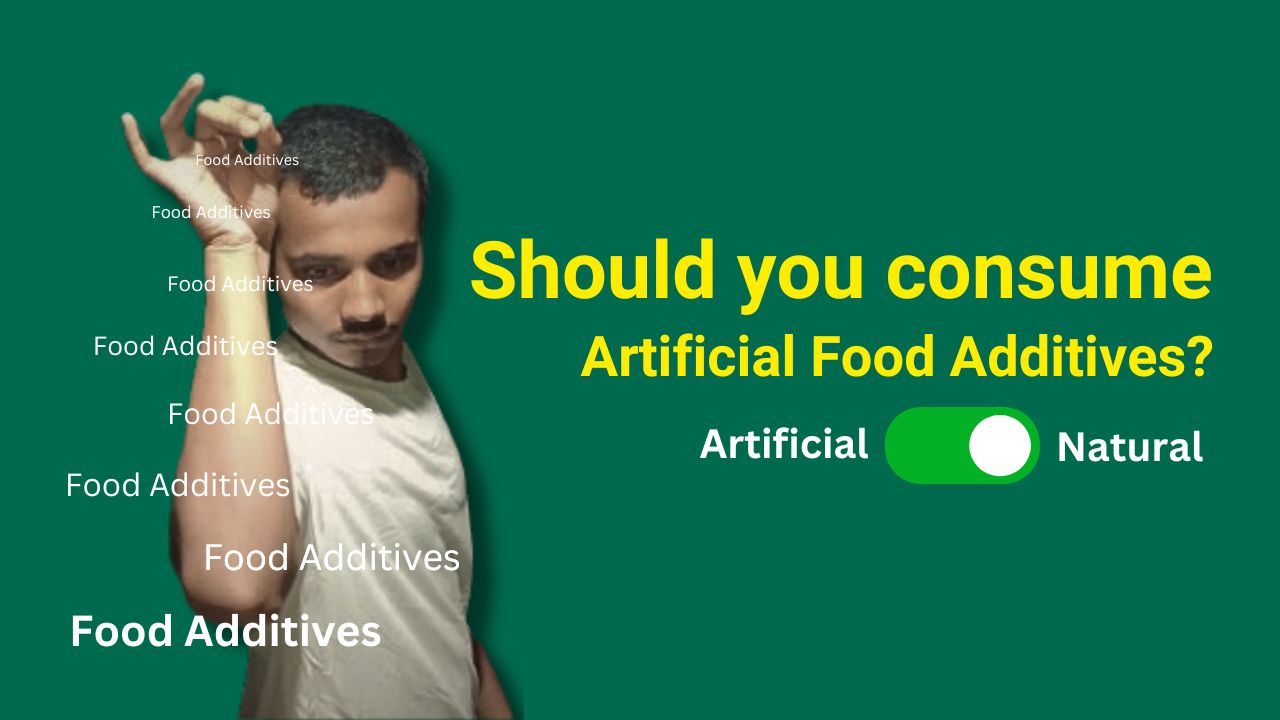
Disclaimer! Based on Personal Experience
What are food additives?
Substances added to food products are Food Additives. When substances that aren’t present in their natural form are Artificial Food Additives. It prevents bacterial growth and preserves or enhances the food’s taste, color, or appearance.
Related:
- Why shouldn’t you use the Alarm? Do this to wake up naturally
- Suffering constipation? Practice these home remedies
How do we calculate the amount of food additives in humans?
Suppose, a new food additive named “X” is found. A safe quantity of 100g X food additive in animals is found. So we can consider X as a safe food additive if 1% of the quantity i.e., 1g X given in humans.[1]
Before artificial food additives are approved for use in foods, they undergo rigorous safety testing by regulatory agencies. The Food and Drug Administration (FDA) in the USA and the European Food Safety Authority (EFSA) in Europe are some of them. They evaluate an additive’s potential toxicity or adverse health effects on humans.
Still, further evaluation will be conducted if adverse effects are found in most people. This evaluation has two results. Either the additive intake amount is reduced (ADI reduced). Or, the additive is banned (if serious negative effects are seen).
The most commonly used food additives
In most other countries, the label is written without E. However, EU countries label food additives as E and the additive numbers. For example, emulsifiers and anti-caking agents have food additive code numbers: E400 to E499 and E500 to E599.[2]
Most commonly used food additives in regular food products –
- Acidity Regulators: Control pH for stability or enzyme activity.
- Anti-caking Agents: Prevent caking or sticking of powders.
- Anti-foaming and Foaming Agents: Reduce or promote foaming.
- Antioxidants: Inhibit food degradation by oxygen.
- Bulking Agents: Increase bulk without affecting taste.
- Food Coloring: Add color for attractiveness or replacement.
- Color Retention Agents: Preserve existing food color.
- Emulsifiers: Allow water and oils to remain mixed.
- Flavorings: Provide taste or smell, natural or artificial.
- Flavor Enhancers: Amp up existing flavors (e.g., MSG).
- Flour Treatment Agents: Improve flour color or baking properties.
- Glazing Agents: Provide shine or protective coating.
- Humectants: Prevent food from drying out.
- Tracer Gas: Test package integrity for longer shelf life.
- Preservatives: Inhibit spoilage by microorganisms.
- Stabilizers: Enhance texture and stabilize emulsions.
- Sweeteners: Add flavor; low-calorie or beneficial options.
- Thickeners: Increase viscosity without altering properties.
Should you consume food additives or not?
The general thumb rule is the higher the natural ingredients, the healthier it is. On the contrary, the higher the number of artificial food additives or processed ingredients, the less healthy it is. Though food authorities approve the above food additives, approval doesn’t ensure health. Those are all approved under limited quantities, types of food products, and circumstances.
If something has many terms and conditions, it is high time to find its replacement.
Similarly, food products with so many additives are better to avoid. By the name of increasing food shelf life, texture, and color companies add plenty of additives. Eventually, this way they make cheaper products.
Let me give you some examples to identify cheaper and healthier products.
1. Whey Protein Powder:
I prefer “Brand A Protein Powder” whose ingredient only has “Whey Protein Concentrate”. Rather, “Brand B Protein Powder” consists of Whey Protein Concentrate, Natural Identical Flavouring Substances, Sweeteners, Stabilizers, Added Sugar, etc as ingredients.
Reason?
Protein Powder is mostly used to treat Muscle Building and Recovery, Nutrition Deficiency, or Protein Deficiency. That’s why Whey Protein Protein is considered the best in these cases.
You will consume protein powder daily.
But do you want to preserve protein powder for eternity or use it as sugar candy? Do you want to have a family pack instead of a six-pack? If not then forget Brand B. Consuming added sugar, sweeteners, and stabilizers will do the above scenarios.
Related:
- Protein Shaker Bottle: a look from inside
- Protein Powder for the first time? Keep these 7 things in mind
2. Peanut Butter:
Brand A Peanut Butter has only Roasted Peanuts as ingredients whereas Brand B has Roasted Peanuts, Sugar, Salt, and Stabilizer. Then A is always preferable to B.
Reason?
Consuming excessive added sugar will risk you for diabetes. In addition, regular extra salt intake will cause high blood pressure. You won’t want these health issues just by taking peanut butter, will you?
3. Biscuits:
Brand A Biscuit has 100% Wholegrain Flour Blend/ Whole Wheat Flour (Atta), Almonds, Butter, and Jaggery Powder as ingredients. Where, Brand B contains Refined Wheat Flour (Maida), Artificial Flavouring Substances, Iodised Salts, Thickaners, Raising Agents, etc. Then, Brand A Biscuit is healthier than B.
Reason?
Brand A contains 100% natural substances that are healthy for your heart and the body. Where Brand B contains the opposite. The company adds whatever to make the product profitable, cheaper and to keep it longer. Anyone who eats these types of biscuits regularly is prone to health issues.
4. Noodles
No one can’t think of snacks without Noodles. It has become the most common snack in college hostel life or at friend’s parties, But the question is are you taking healthy noodles?
Regular Noodles contain Refined Wheat Flour (Maida), Thickeners, Acidity Regulators, Humectants, Flavoring Enhancers, etc as common ingredients.
Whereas, Healthy Noodles contains ingredients like Whole Wheat Flour (Atta), Semolina, Ragi, Millets, Cluster bean powder (Natural Gum), etc.
Now, Regular Noodles are clearly unhealthy in any respect. Why?
Instead of natural ingredients, you are taking a bunch of chemicals (i.e. Artificial Food Additives). First of all, Maida is less healthy than Atta. Because after the repolishing and processing of atta, it becomes Maida. Thus, Maida loses most of its fibers, nutrients, and vitamins during the repolishing.
Conclusion
Finally, will you eat an apple with food additives like thickeners, flavoring enhancers, and acidity regulators, if I ask? Where you can enjoy the fresh and natural taste of an apple. Do you really require those additives just to preserve its flavor, taste, and color so that you can eat that apple after a year?
Unfortunately, in doing so you have to forget the freshness and healthiness of the apple. You also have to forget the nutrients, vitamins, and minerals. Will you do that?
If not, from now on, choose food products with natural ingredients as much as possible. Though it will cost some extra money it will save your health.
In summary, CHOOSE FOOD PRODUCTS BY INGREDIENTS, NOT BY BRANDS!
See Also:
- Why are there lights on the keyboard? Secrets Found!
- Biodegradable vs Sustainable Toothpaste: Simplified Differences
- Did you know Sun Drying is better than Indoor Drying?



